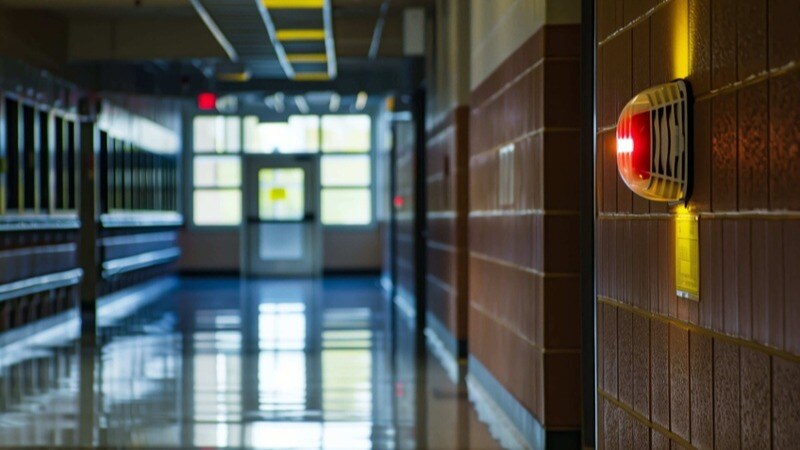Avoiding School Funding Summertime Blues: How to Budget for Fire Safety System Maintenance
by Brothers Fire & Security | Jun 20, 2024 | fire, fire monitoring, budget | 0 comments

The final bells have rung, and summer vacation has begun. But for school administrators, work to prepare for the next school year is just beginning.
School districts, many operating with limited funds and small budgets, must ensure their facilities are safe and secure when students return in the fall. This likely means inspecting current fire and security systems, testing for defects, or ordering full evaluations by certified technicians.
If not properly allocated, these projects can eat into a school’s operating budget–challenging even for schools without funding gaps. Administrators need to know how much time and money goes into facility maintenance work over the summer–so they can correctly allocate their budgets or request grants for the next school year.
Let’s look at how schools can budget for summertime fire safety monitoring and maintenance projects.
Fire System Inspection Costs and Timelines
The National Fire Protection Agency (NFPA) oversees standards for fire protection systems and mandates maintenance at different intervals. The cost and timeline figures below are general estimates, which can vary by state and vendor.
- Annual inspections. These inspections review cylinder pressure, operation conditions, hoses, containers, sprinklers, pull stations, control panels, batteries, backup power, etc. Technicians will also test communication pathways and alarm response times.
- Schools must also factor in kitchen hood inspections for their lunchrooms, including all wet chemical systemsFire sprinkler inspections, for example, cover pipes, fittings, hangers, braces, and supports. Any water flow or valve issues must be fixed, as well as any malfunctioning anti-freezing systems in cold-weather climates.
- Annual inspections are more extensive than semiannual inspections. It will usually take 1-2 days of work for a few technicians to complete an annual inspection.
- Semiannual and monthly inspections. These inspections are typically shorter, occurring twice each year. Technicians physically test tamper switches, flow switches, and backup batteries semiannually. They would also visually inspect any notification devices monthly. Semiannual and monthly inspections usually take around 2-6 hours, depending on facility complexity.
Fire System Maintenance Costs and Timelines
If an inspection unearths a safety issue, schools must fix it before students return to class. Here are some common issues that arise from school facility inspections:
- Sprinkler system pipe and head replacements. Leaky pipes and sprinkler heads restrict water flow and prevent effective distribution. If one sprinkler head fails, then technicians must replace any similar heads.
- Kitchen hood fire suppression system repairs. Malfunctioning kitchen hood suppression systems restrict the distribution of wet chemicals. Repairs to specific switches, nozzles, or cartridges can be done quickly, but full hood replacements can run up to be expensive and can take around 2-8 weeks to complete.
- Fire extinguisher replacements. Commercial fire extinguishers typically last around 12 years before needing replacement. Schools should plan on replacing non-rechargeable extinguishers at least every five years.
On the low end, school administrators need to allocate several thousand dollars–and a few weeks–for fire system upkeep. But if any major issues arise, expect costs to rise, with repair times extending throughout the summer break.
There are some available programs to help schools offset these costs, though.
Funding Help for Projects
The federal government and several state governments offer grants to help schools pay for needed fire safety system maintenance. Here are a few examples:
- The Federal Emergency Management Agency’s (FEMA) Fire Prevention and Safety Grants allow schools to partner with local fire departments for upgrades to alarm systems, sprinklers, fire extinguishers, and fire doors.
- States may also offer grants in partnership with state fire marshals or educational departments. Minnesota, for example, offers School Safety Grants to help pay for safety improvements.
While students spend summertime camping or playing, schools spend their summertime preparing for an eventual return. Don’t get caught with unexpected fire safety system repair costs. If you need help budgeting for your school’s fire safety system, use our Budgeting Matrix Worksheet to get started.
Recent Posts
- Beyond the Door: How Modern Access Control Systems Protect Multi-Location Businesses
- Protect Your Business: The Benefits of a Security System for Retailers
- Hidden Risks: Why Aging Fire Systems Need More Than Just Annual Inspections
- Strategic Security Camera Placement: Maximizing Protection Through Integration
- Why NFPA 72 Makes Integrated Fire & Security Monitoring Systems Essential
